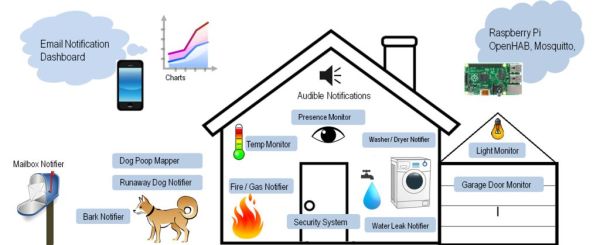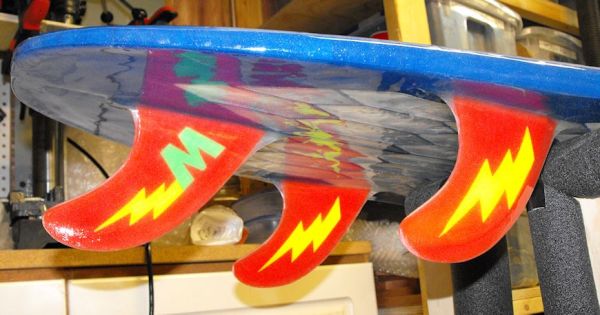[Eric T] wrote up his insanely-comprehensive home automation setup. What started out as a method to notify him when his dog barked grew into a whole-house, Arduino-powered sensor extravaganza. We’ve previously looked at two different steps from this mammoth article. One automated his dog, the other focused on the Wink hub to bridge with commercial hardware like smart lightbulbs. Now let’s look at the project as a whole.
The basic backbone of the project is actually quite straightforward. He made a radio gateway base station out of an Arduino, a RFM69 radio unit, and an Ethernet shield that connects to a Raspberry Pi to serve up a GUI interface. The open-source home automation project OpenHAB makes it all available through browser or smartphone.
Next, he made additional sensor nodes from Arduino and RMF69 radios. These sensor nodes can all be separate from each other, which has enabled [Eric] to expand his system incrementally over time.
Modules of particular interest are the Uber Sensor and the Washer-Dryer module. For the Uber Sensor, [Eric] basically threw every sensor he could at an Arduino; it sends noise levels, light levels, motion, temperature, humidity, and presence of smoke, flame, or flammable gas. Some of these conditions trigger e-mail alerts, while others are simply stored for future perusal.
On the simpler end of the spectrum, he uses a noise-level detector to detect the end of a laundry cycle and then trigger a notification. The clever bit is that the message is automatically cleared when an attached motion detector triggers, presumably because someone’s gone to the basement to empty the dryer. Very neat.
16All of this is basically made practical and affordable by the presence of simple Arduino libraries and cheap hardware modules purchasable over Ebay. If you’re at all interested in a DIY home automation project, this offering is worth a look for inspiration and a great overview.

















